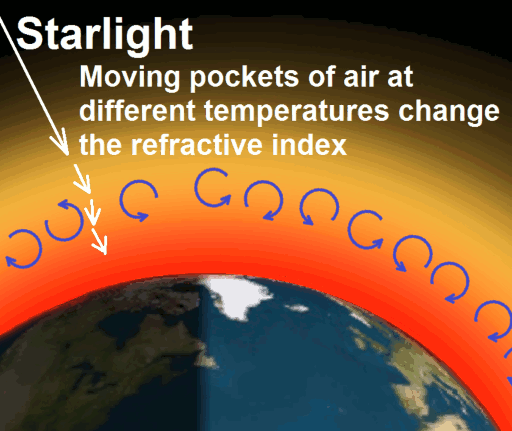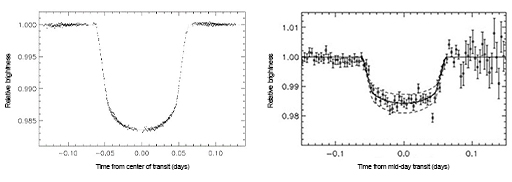5.2 Prevent the stars from twinkling
As you’ve seen in Section 2, hot Jupiter transits can be measured from the Earth with inexpensive equipment. However, there is a problem: the air we breathe interferes. Earth’s atmosphere tends to get in the way of light coming from space, especially if conditions are humid and there is a lot of water in the atmosphere. You can see this in action when you look at a bright star – the star often appears to twinkle. That twinkle is caused by atmospheric currents that cause the air you’re looking through to move.
The animation in Figure 3 shows how the motion of air currents in Earth’s atmosphere can cause stars to appear to twinkle – to apparently flicker or very slightly change their positions. As you might imagine, this effect makes it difficult to get a really precise measurement from the ground of how much light is coming from the star.
Telescopes in space, however, don’t have this problem. Compare the light curve of HD 209458 b from the ground with the one taken by the Hubble Space Telescope (Figure 4).
The right-hand panel shows the transit of HD 209458 b as observed from the ground, and the left-hand panel shows the transit observed using the Hubble Space Telescope. Observing from space allows much more precise measurements.


